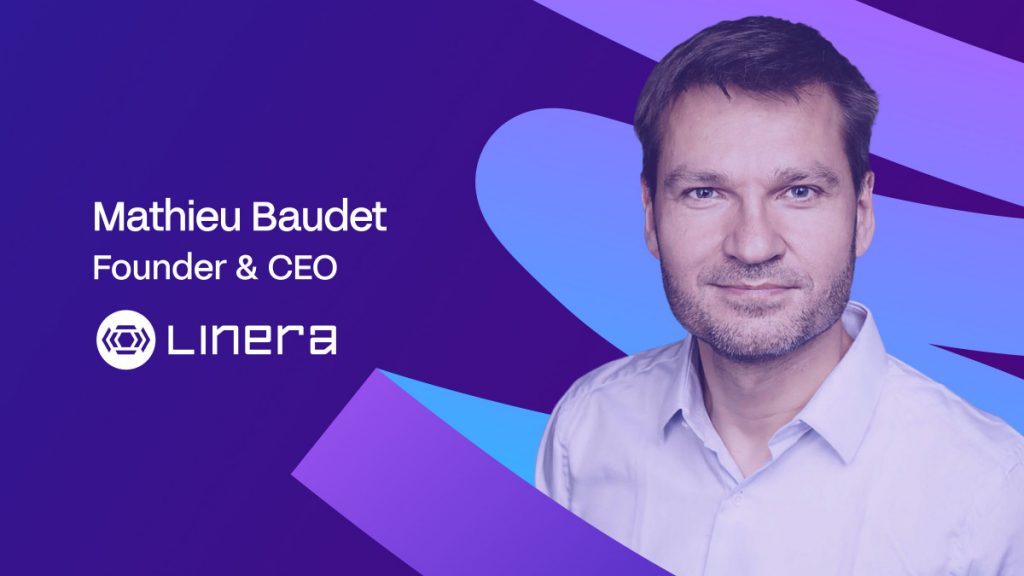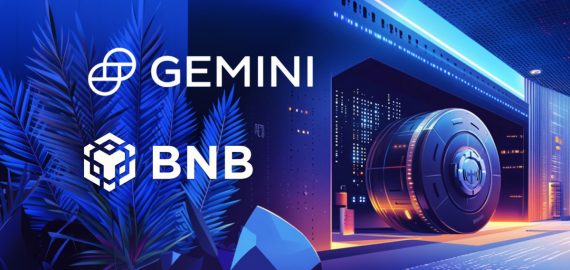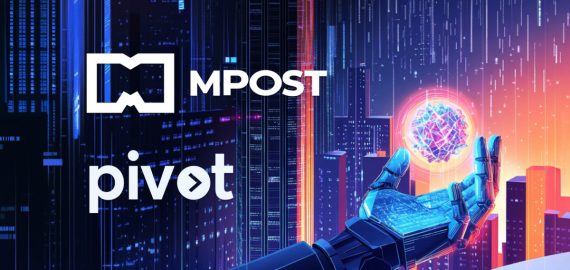Redefining Scalability: Linera’s Vision for Web3 Infrastructure


In Brief
Linera’s unique microchain architecture enables instant transaction finalization for users, offering scalability, developer experience, and the intersection of Web3 and AI.

Imagine a blockchain where every user has their own dedicated chain and can finalize transactions almost instantly. In this interview, Linera Founder & CEO Mathieu Baudet reveals how this vision becomes reality through Linera’s unique microchain architecture, offering a fresh take on scalability, developer experience, and the intersection of Web3 and AI.
Can you share your journey into Web3?
I started working in Web3 when I joined Facebook’s blockchain project. Before that, I was already at Facebook working as a software security engineer, and later worked in infrastructure and machine learning, focusing on scalable systems. When the blockchain initiative kicked off, I had the opportunity to be one of the first engineers working on the consensus protocol. That research eventually led to what became Linera.
Can you explain the microchain paradigm and how it enables per-user blockchains with ultra-low latency and high security? 
What we do at Linera is very different from typical L1s. We organize blockspace into potentially unlimited parallel chains, which we call microchains, all maintained by the same set of validators. These chains offer a new programming model with built-in parallelism. They communicate easily, share security and liquidity, and are seen as a means of execution.
One key reason for the ultra-low latency is that block production is delegated to users. As a user, you can have your own microchain, store your assets, and propose small blocks anytime. You broadcast directly to validators and quickly get finality because you’re essentially driving the process.
How does Linera simplify developer workflows using GraphQL and Wasm clients?
The way we structure blockspace not only helps scalability but also changes how clients interact with the chain. Typically, clients are disconnected and only talk to RPC providers. But because our chains are small and user-specific, we can replicate them on the client side as sparse clients. That means you have a local copy of your on-chain data.
We integrated a Wasm VM into the client to support GraphQL queries. The local sparse client acts like a trusted RPC provider, enabling high-level queries and intents — for example, a user can simply state ‘I want to start a transfer,’ and the client will generate the corresponding transaction to sign. This is great for frontend development and even more relevant as AI agents start replacing frontends. AI can communicate via GraphQL, and we demonstrated an MCP-to-GraphQL proxy that allows agents to interact with any GraphQL server seamlessly.
What support and tooling do you offer for integrating AI oracles and off-chain inference within microchain transactions?
Linera follows a synchronous execution model. When a user submits a block, validators execute it right away, just like early Bitcoin and Ethereum did. This allows us to handle slightly non-deterministic transactions, such as those querying AI oracles or external storage.
If validators reach consensus on the oracle’s response, the block is accepted. If not, it fails—but the rest of the system continues unhindered. This model makes Linera particularly good at integrating with external systems.
Can you share a real-world example of Linera integrating on-chain calls to external web services?
We announced a partnership with Walrus, the data availability layer from the Sui team. Linera transactions will be used to fetch data from Walrus storage and verify it. Then, through a future bridge with Sui or another chain, we’ll be able to transfer those proofs, helping apps validate external data in Linera and across other chains.
What advantages does Linera offer for DeFi use cases like cross-chain auctions or high-frequency transfers?
DeFi is an exciting space for us. With our parallel microchain structure, we can create a dedicated microchain for each auction or financial product. This enables parallel auctions with great efficiency.
When it comes to transfers, our system is optimized for payments. We have a testnet demo showing one million payment transactions per second. That’s game-changing for stablecoins or tokenized Bitcoin. We also offer accurate timestamping, so user-submitted bids in their microchains can be prioritized fairly. Whether the order book is inside or outside Linera, this is a powerful feature.
What role does Linera play in the intersection of AI and Web3?
I touched on this earlier, but Linera’s architecture makes it ideal for AI agents. All Linera applications are designed to support GraphQL by default, which makes them automatically compatible with AI workflows. That’s a huge advantage.
What enhancements are planned for the Linera SDK in terms of schema advancement, broader language support, and scalability?
Our initial SDK targets the Wasm VM and is built in Rust. We’re now working on a Solidity/EVM SDK so developers can reuse high-quality Solidity libraries and projects. In terms of scalability, we already support asynchronous messaging between microchains and added primitives like shared data blobs and notification subscriptions, great for decentralized social apps. This enriches cross-chain interaction and makes the entire system more scalable.
As AI-driven smart contracts and DeFi intersect, how will microchains support AI-crypto use cases in the coming years?
Linera’s architecture gives us a strong technical advantage in this space. Our system allows seamless queries to external AI services and can serve as a coordination layer for DeFi-AI apps. Some components may remain centralized, but others can be transparently decentralized, increasing trust. Linera also allows for decentralized validation and execution, even if the block production remains high-frequency and centralized. This flexibility is crucial.
How is Linera preparing for trends like quantum resistance and edge computing?
On quantum resistance, our approach is cryptographic agility. We want to be able to upgrade signature schemes gradually if needed. It’s similar to what Ethereum is doing. As for edge computing, our sparse client architecture supports it naturally. These clients are trustless, maintain their own state, and can process data and build blocks autonomously.
We even did a demo showing AI computing on the edge using a small model. Combined with real-time protocol communication, our system aligns well with edge computing trends.
With the rise of cross-chain frameworks and modular architectures, how will Linera integrate with emerging protocols and bridges?
Bridges are a big part of our future infrastructure. Some will be native, we’re already working on partnerships, while others may leverage existing frameworks like Axelar, LayerZero, or Wormhole.
Our synchronous execution helps here. It allows us to read from other blockchains quickly. Plus, our block headers are compatible with EVM cryptography, making them easily exportable. So Linera can power hybrid applications where features like data validation or agent interaction run on Linera, while settlement might happen on another L1.
Disclaimer
In line with the Trust Project guidelines, please note that the information provided on this page is not intended to be and should not be interpreted as legal, tax, investment, financial, or any other form of advice. It is important to only invest what you can afford to lose and to seek independent financial advice if you have any doubts. For further information, we suggest referring to the terms and conditions as well as the help and support pages provided by the issuer or advertiser. MetaversePost is committed to accurate, unbiased reporting, but market conditions are subject to change without notice.
About The Author
Victoria is a writer on a variety of technology topics including Web3.0, AI and cryptocurrencies. Her extensive experience allows her to write insightful articles for the wider audience.
More articles

Victoria is a writer on a variety of technology topics including Web3.0, AI and cryptocurrencies. Her extensive experience allows her to write insightful articles for the wider audience.

















































